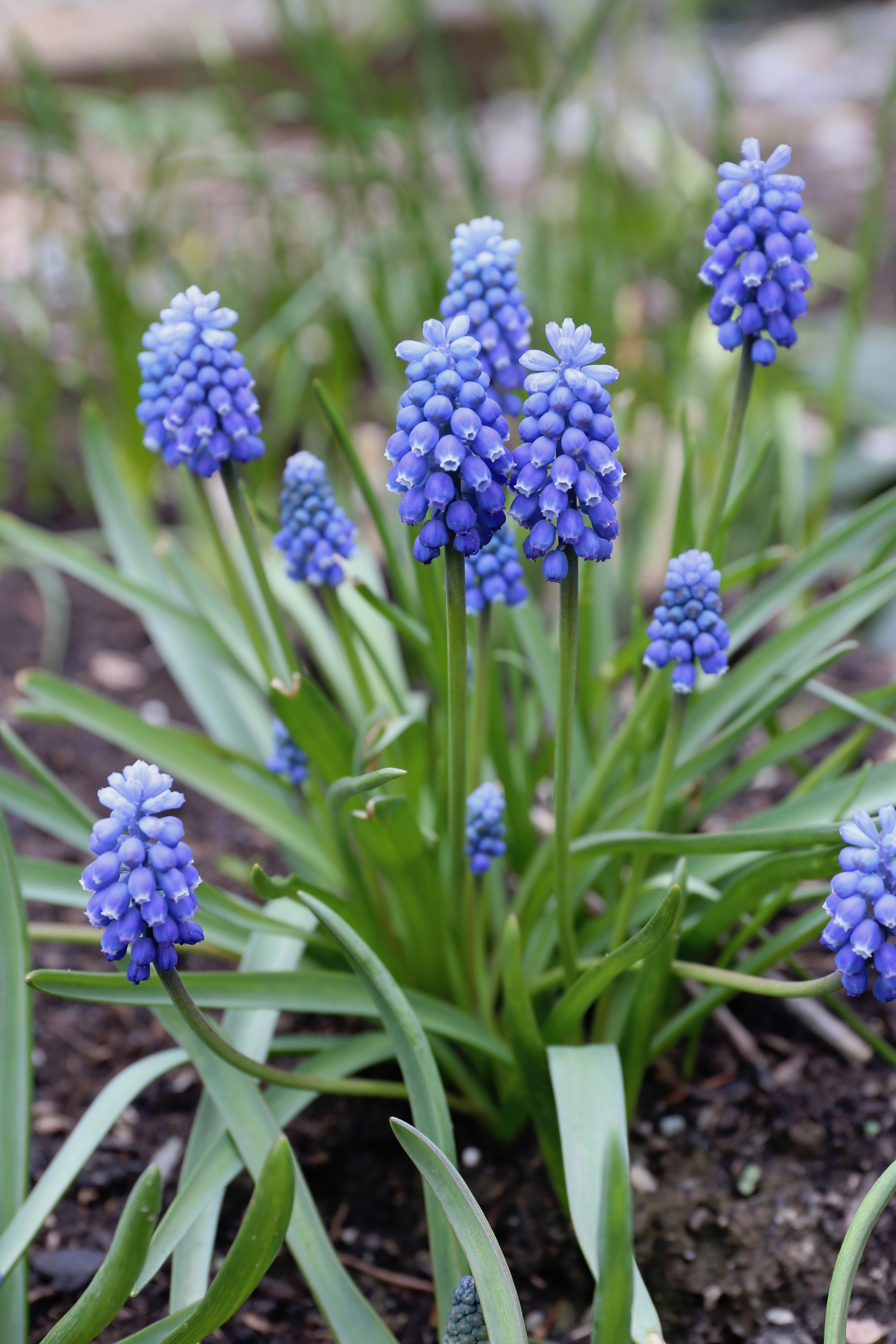Your Guide to Planning, Planting, and Growing Muscari
Spring gardens always look better when they include muscari. These cute little cobalt blue flower clusters complement every other color in the rainbow. And, at just 6 to 8” tall, it’s easy to find ways to incorporate them into any garden or landscaped area.
Muscari are commonly known as grape hyacinths, which perfectly describes their flowers: tight clusters of fat little bells with a grape juice fragrance. Muscari bloom in mid-spring, at the same time as daffodils and tulips. Deer and rodents rarely bother them, and once planted, the bulbs multiply readily, returning to bloom again year after year.
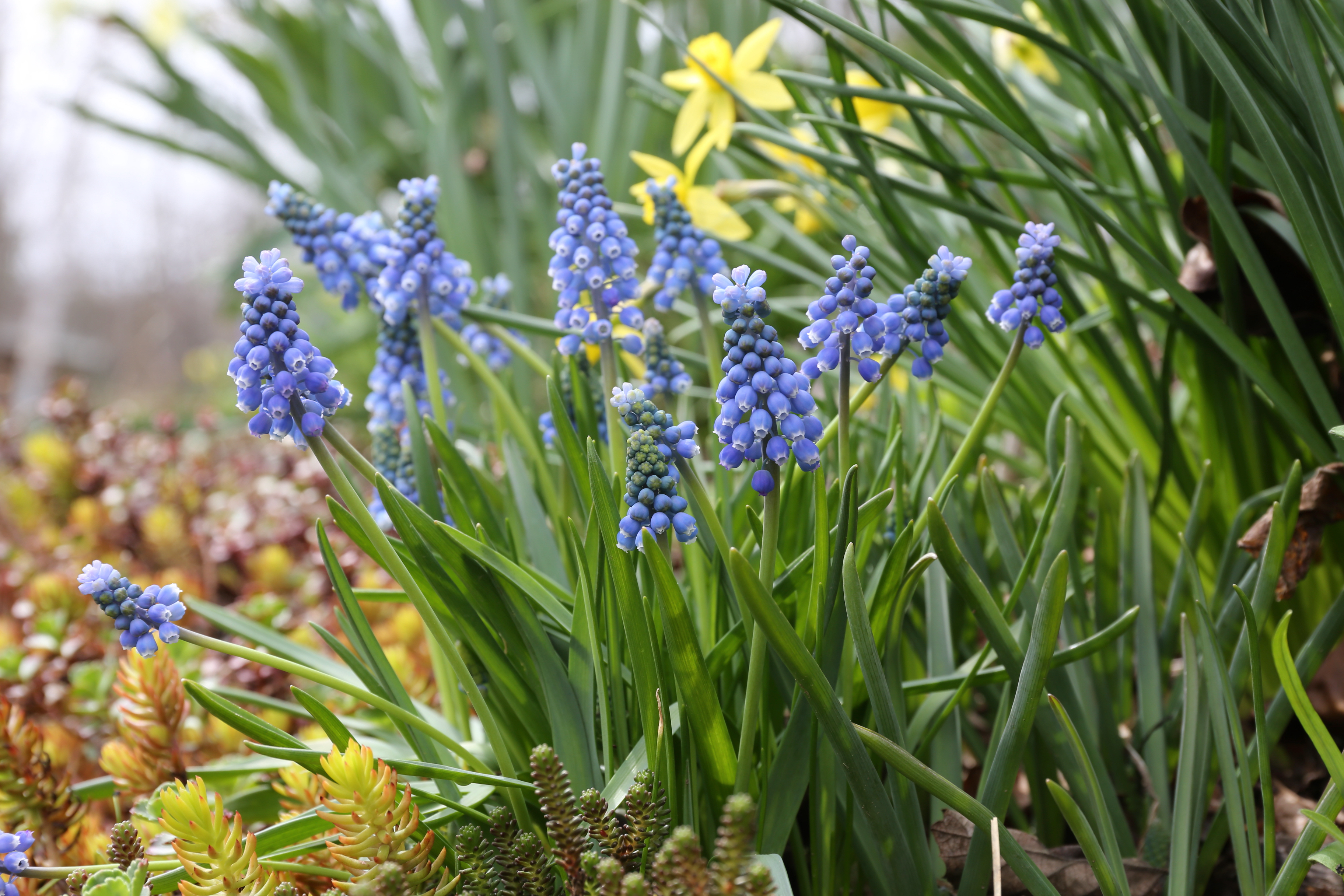
Start with a Better Bulb
When you compare two muscari bulbs side by side, it’s easy to see the difference in quality. The bigger the bulb, the more food that's stored inside. A larger bulb will give you a stronger plant with more flowers. Longfield Gardens supplies plump, 8/9 cm muscari bulbs to ensure you enjoy the biggest, brightest blooms.

Plan for Success
Sun or Shade: Plant muscari in full sun or partial shade.
Hardiness Zone: Muscari are winter hardy in zones 4-9. If you don't know your growing zone, you can reference the USDA hardiness map here.
Soil Conditions: Bulbs should be planted in good soil that is well-drained and never soggy. Peat moss or compost may be added at planting time to help improve drainage.
Choose Your Favorites: When shopping for muscari, you will find there are a number of different flower styles and colors. By planting several types, you can stretch the muscari season and create an interesting mix of colors and textures. The most widely planted species is ultramarine blue muscari armeniacum. Others types to consider include muscari latifolium, which stands 9” tall and has blue-black flowers with a lavender-blue topknot, and muscari Ocean Magic, which is 6-7” tall, with florets that go from deep blue at the bottom to almost white on top. Shop for these and other types of muscari HERE.
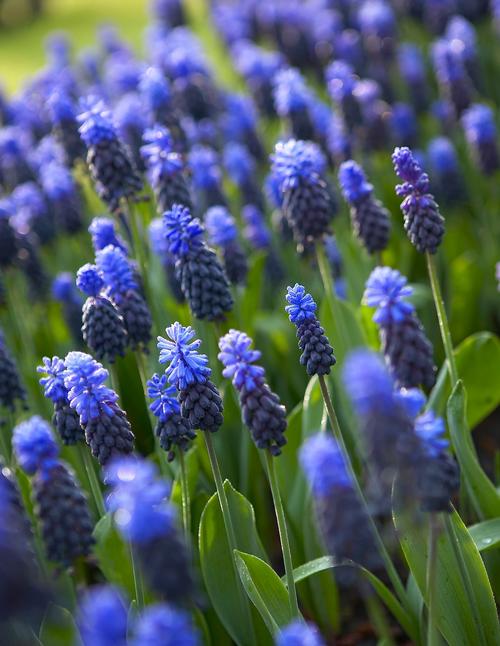
Where to Plant Muscari
Perennial Gardens: Muscari are ideal for planting at the front of flower beds and borders. They pair beautifully with tulips and other spring flowers. Muscari also grow well in rock gardens.
Naturalized Areas: These carefree bulbs may be planted by the thousands to create great swaths of color beside ponds and streams, beneath trees and shrubs, and in woodlands and grassy areas. They are ideal companions for daffodils and tulips.
Pots and Planters: Muscari grow well in pots and planters, either planted on their own or mixed with other spring bulbs such as daffodils, crocus and hyacinths. After flowering, you can transplant the bulbs into your garden so they will bloom again the following spring.
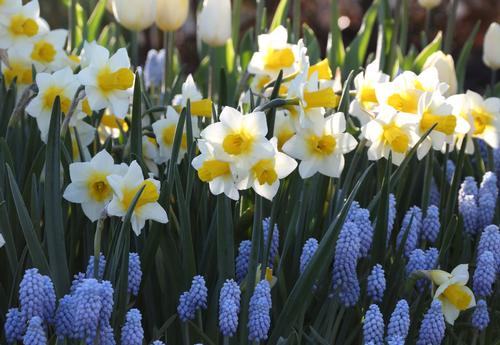
How to Plant Muscari
When to Plant: Muscari bulbs should be planted in mid to late fall, any time after the first frost and before the ground freezes. For best results, plant your bulbs within a month after you receive them.
Depth and Spacing: Plant muscari bulbs 3 to 4” deep and 2 to 3” apart with the pointed end up. You may plant the bulbs individually, but they look more natural planted in groups of 6 or more. To plant multiple bulbs at once, just dig out a small area, plant the bulbs and replace the soil. Fall and winter rains usually provide adequate moisture for bulbs. Water only if the weather is very dry.
Planting Tips: Muscari are inexpensive bulbs, so it’s easy to plant them in large numbers. Simply dig out an area, scatter the bulbs, and replace the soil.
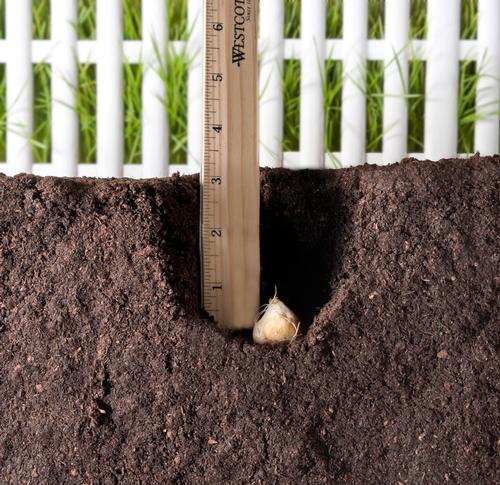
What to Expect
Muscari will grow almost anywhere. If the soil and weather conditions suit them, the bulbs will multiply and give you a better show each spring. You can encourage the bulbs to perennialize by planting them in full sun and very well-drained soil that stays dry during the summer.
If the bulbs multiply and become crowded over time, they can be dug up, divided and replanted. The best time to do this is in late spring, right after they finish blooming. Dig gently, keeping the foliage attached. Replant immediately and water well to settle the bulbs.
Muscari look pretty in a vase and the flowers can last for a week or more. For a spring nosegay, combine muscari with primroses, violas and other small spring flowers.
Muscari bulbs are also good for forcing. Plant the bulbs in pots in late fall. Water well and then store in a cool, dark place at about 40°F for at least 15 weeks. Learn more about forcing bulbs HERE.
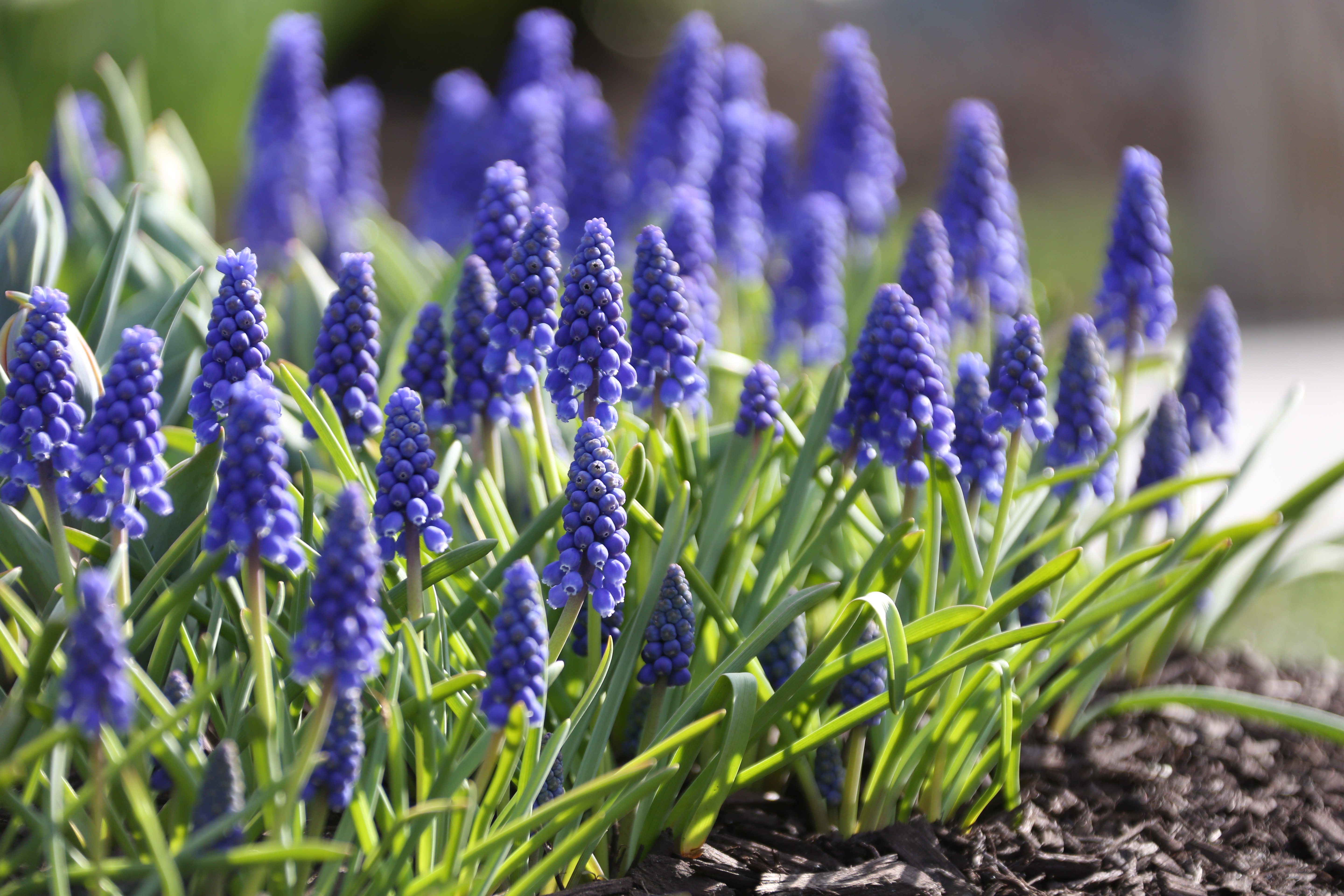
Caring for Muscari after they Bloom
Like other spring bulbs, muscari use their foliage to produce energy for next year’s flowers. Once the flowers have passed their prime, allow the foliage to continue growing until it yellows. In most cases, the foliage will just fade away. If not, yellowed foliage can usually be removed with a gentle tug.
Unlike other spring-blooming bulbs, muscari sometimes produce foliage in the fall as well as in the spring. A flush of fall foliage gives the bulbs a second chance to gather more energy for next year’s flowers. Just let the foliage grow until it is killed by frost. New foliage will appear the next spring.
To learn more, you may be interested in reading:
Muscari: The Perfect Partner for Tulips and Daffodils
How to Plan a Spring Bulb Garden
How to Grow Spring Bulbs in Containers
